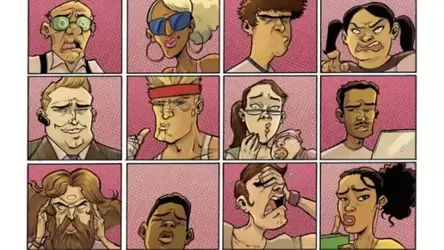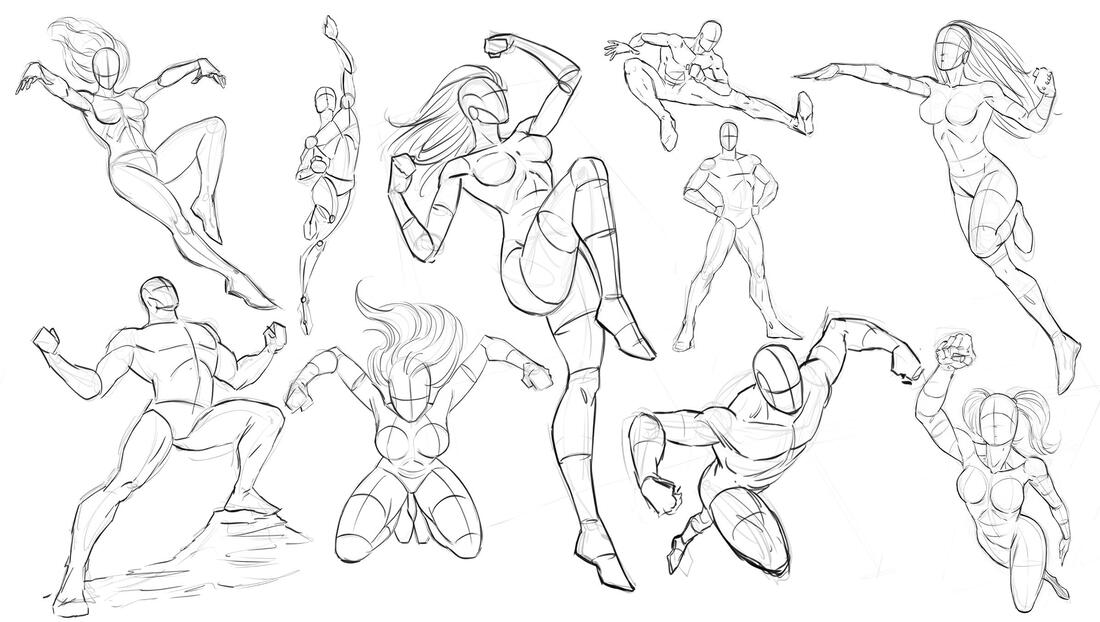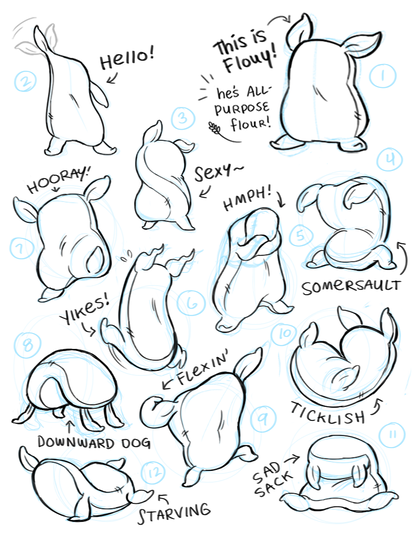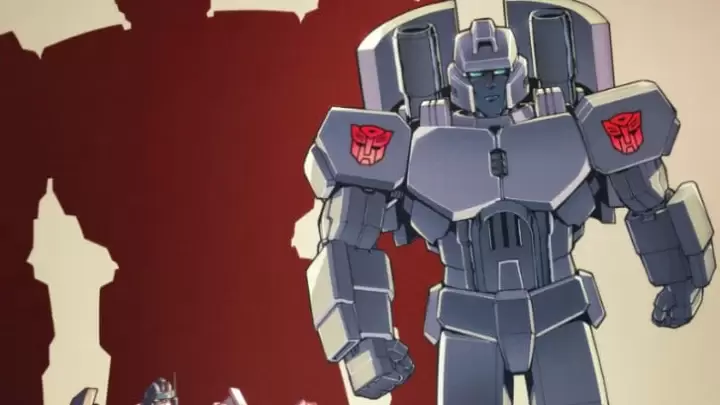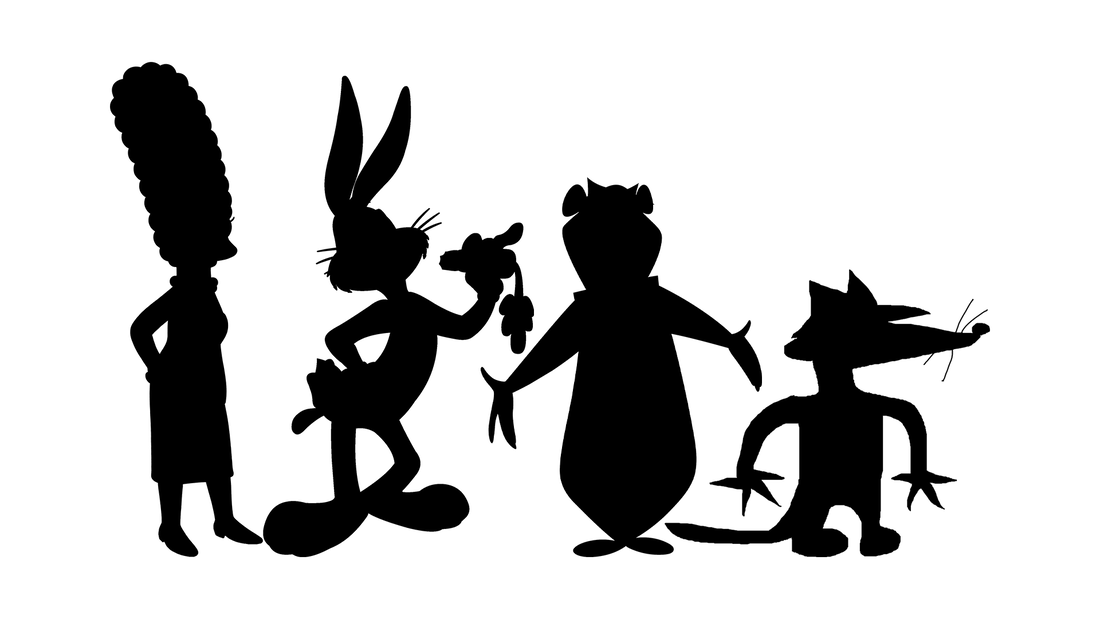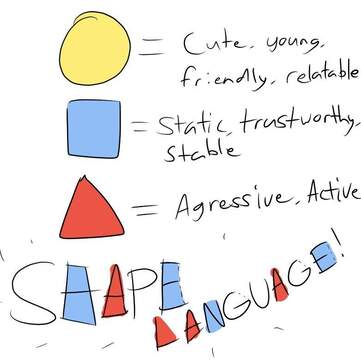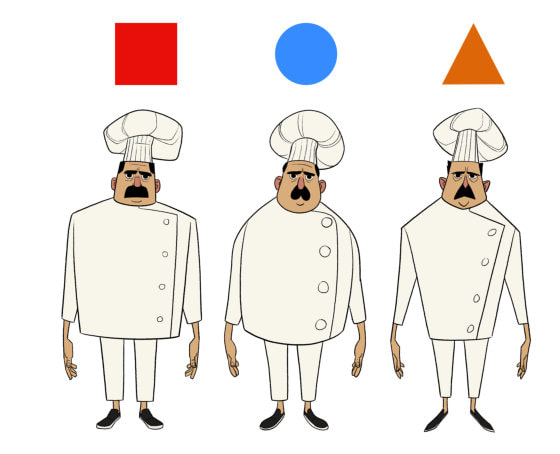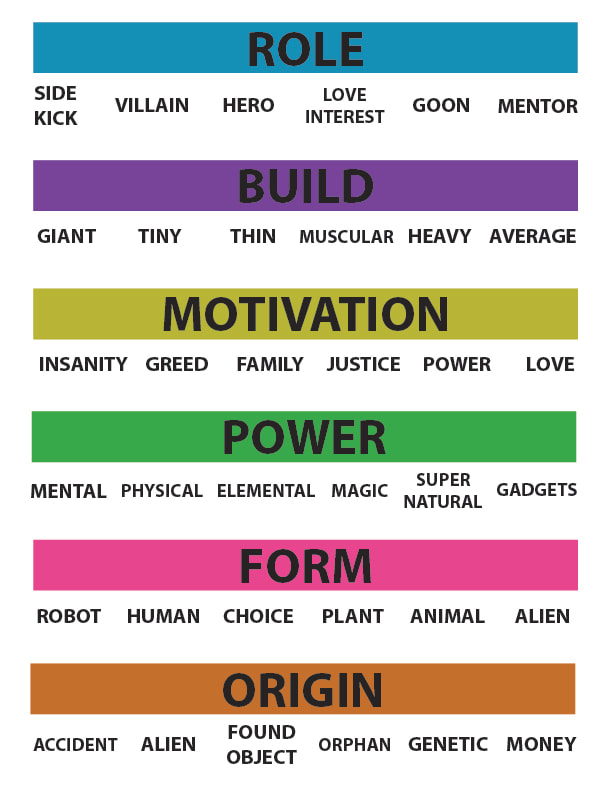WHAT IS CHARACTER DESIGN?
Character design is the process of fully developing a character's style, personality, behavior, and overall visual appearance in the visual arts. Character designers construct characters as a means of conveying stories.
Character design is the process of fully developing a character's style, personality, behavior, and overall visual appearance in the visual arts. Character designers construct characters as a means of conveying stories.
TIPS FOR CHARACTER DESIGN
Exaggerate
Exaggerating the defining features of your character design will help it appear larger than life. Exaggerated features will also help viewers to identify the character's key qualities. Exaggeration is key in cartoon caricatures and helps emphasise certain personality traits. If your character is strong, don't just give it normal-sized bulging arms, soup them up so that they're five times as big as they should be.
“I lean toward having my characters overact,” Rob Guillory says. “It’s the difference between acting on Broadway or on the big screen. Broadway actors project louder because they don’t have the benefit of a camera close-up. They’re trying to reach the guy sitting at the back of the theater. Comics are the same to me. I don’t have audio or actual motion on the page, but by making the characters act in more dramatic, exaggerated fashion I can bridge that gap. I’ve had readers tell me they remember certain scenes I’ve drawn as if they were actually moving, not just a still image. That’s sort of the goal.”
Exaggerate
Exaggerating the defining features of your character design will help it appear larger than life. Exaggerated features will also help viewers to identify the character's key qualities. Exaggeration is key in cartoon caricatures and helps emphasise certain personality traits. If your character is strong, don't just give it normal-sized bulging arms, soup them up so that they're five times as big as they should be.
“I lean toward having my characters overact,” Rob Guillory says. “It’s the difference between acting on Broadway or on the big screen. Broadway actors project louder because they don’t have the benefit of a camera close-up. They’re trying to reach the guy sitting at the back of the theater. Comics are the same to me. I don’t have audio or actual motion on the page, but by making the characters act in more dramatic, exaggerated fashion I can bridge that gap. I’ve had readers tell me they remember certain scenes I’ve drawn as if they were actually moving, not just a still image. That’s sort of the goal.”
Make Your Character Distinctive
Whether you're creating a monkey, robot or monster, you can guarantee there are going to be a hundred other similar creations out there. Your character design needs to be strong and interesting in a visual sense to get people's attention.
Another good way to make your character distinct and improve its pose, says Ørum, is to turn it into a silhouette. "Then you can see how the character ‘reads’ and if you need to make the gesture more clear. Do you understand the emotion of the character and see the line of action? Can things be simplified? Try not to overlap everything, and keep the limbs separate."
“Transformers are definitely prime—no pun intended—candidates for the silhouette test,” Casey Coller says. “Anyone familiar with Transformers should be able to recognize most of the major players simply by looking at a silhouette, though some characters do share body types.”
Whether you're creating a monkey, robot or monster, you can guarantee there are going to be a hundred other similar creations out there. Your character design needs to be strong and interesting in a visual sense to get people's attention.
Another good way to make your character distinct and improve its pose, says Ørum, is to turn it into a silhouette. "Then you can see how the character ‘reads’ and if you need to make the gesture more clear. Do you understand the emotion of the character and see the line of action? Can things be simplified? Try not to overlap everything, and keep the limbs separate."
“Transformers are definitely prime—no pun intended—candidates for the silhouette test,” Casey Coller says. “Anyone familiar with Transformers should be able to recognize most of the major players simply by looking at a silhouette, though some characters do share body types.”
Shape Language
Shape Language is a concept used in art and animation to communicate meaning based on shapes we are familiar with. When used in character, object, and background design, shapes can tell a story, show personality, and illicit an emotional response in the viewer without using any words.
Shape Language is a concept used in art and animation to communicate meaning based on shapes we are familiar with. When used in character, object, and background design, shapes can tell a story, show personality, and illicit an emotional response in the viewer without using any words.
What is the best shape for character design?
In design, shapes give the character a sense of meaning and identity. So, if we assume one shape is better than the other, by definition, we’re saying one emotion is superior to the other. Shapes are best implemented we combine them to create emotions that make our design meaningful.
What makes a character design appealing?
Characters should follow an easy-to-read design language, meaning the audience should identify the feelings and personality type just by looking at it. Making your design complicated and too abstract won’t appeal to everyone.
What makes a character look different?
Creating a character that looks and feels different takes a lot of creativity and effort. You should experiment with different body types, posture, skin tone, and limbs length to see which one you feel comfortable with.
In design, shapes give the character a sense of meaning and identity. So, if we assume one shape is better than the other, by definition, we’re saying one emotion is superior to the other. Shapes are best implemented we combine them to create emotions that make our design meaningful.
What makes a character design appealing?
Characters should follow an easy-to-read design language, meaning the audience should identify the feelings and personality type just by looking at it. Making your design complicated and too abstract won’t appeal to everyone.
What makes a character look different?
Creating a character that looks and feels different takes a lot of creativity and effort. You should experiment with different body types, posture, skin tone, and limbs length to see which one you feel comfortable with.
CHARACTER ACTIVITY
RESOURCES
https://www.creativebloq.com/character-design/tips-5132643
https://dreamfarmstudios.com/blog/shape-language-in-character-design/
https://www.waltdisney.org/sites/default/files/2020-04/T%26T_ShapeLang_v9.pdf
https://expresions-in-animation.tumblr.com/
https://dreamfarmstudios.com/blog/shape-language-in-character-design/
https://www.dailymail.co.uk/sciencetech/article-3833481/Why-baddies-triangular-good-guys-round-Mathematician-reveals-hidden-geometry-hit-films.html
https://www.creativebloq.com/character-design/tips-5132643
https://dreamfarmstudios.com/blog/shape-language-in-character-design/
https://www.waltdisney.org/sites/default/files/2020-04/T%26T_ShapeLang_v9.pdf
https://expresions-in-animation.tumblr.com/
https://dreamfarmstudios.com/blog/shape-language-in-character-design/
https://www.dailymail.co.uk/sciencetech/article-3833481/Why-baddies-triangular-good-guys-round-Mathematician-reveals-hidden-geometry-hit-films.html
